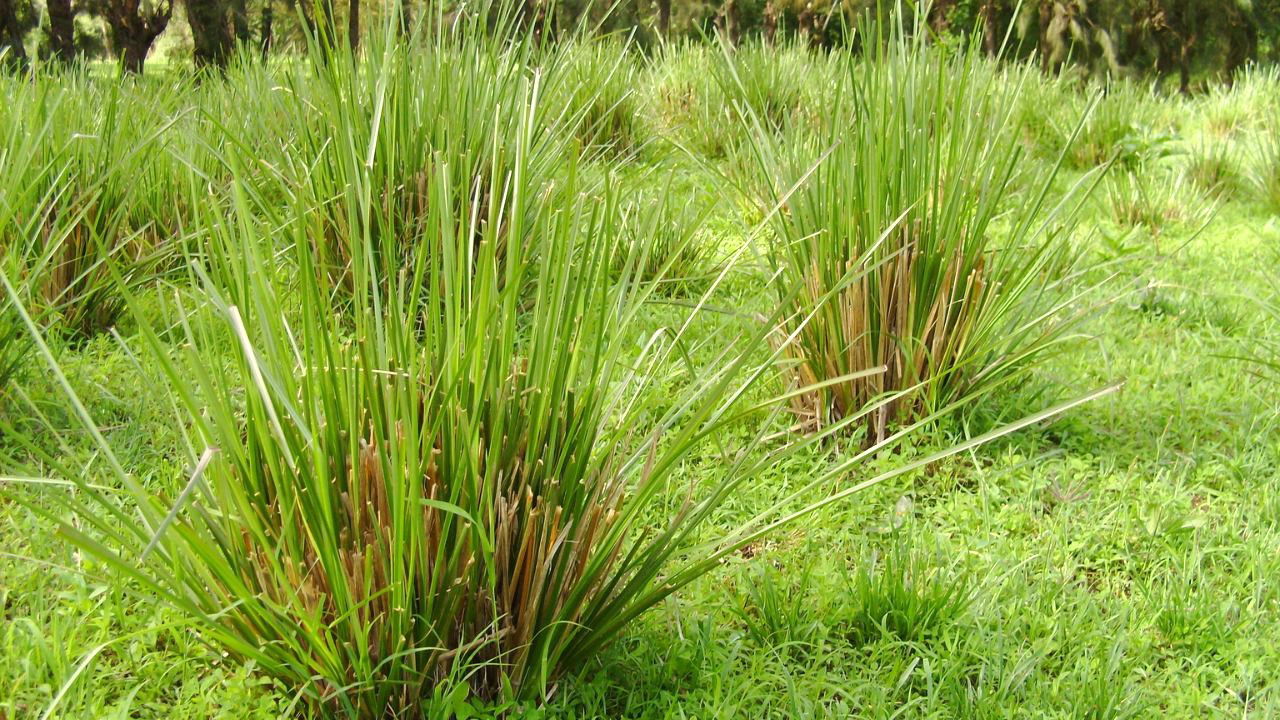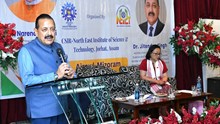
Vetiver, a plant native to India, spread across many parts of the country has been widely heralded as a miracle grass. This ubiquitous herb now found across several tropical climates across continents merits this flamboyant sobriquet quite naturally from the multifarious benefits that it confers on the ecosystem wherever it is found, introduced, or grown and from the countless uses that it lends itself to in native as well as newer habitats.
Vetiver goes by the nomenclature of Vetiveria zizaniodes (L) Nash. and is synonymously known as Chrysopogon zizaniodes (L.) Roberty; it belongs to the family Poaceae and is a densely tufted C4 grass with profuse roots.
Ubiquitous Plant: Vetiver has remarkable adaptability across several soil and environmental conditions that stretches from drylands to marshes and even floating and submerged conditions, through acidic to alkaline soils (pH range of 4 to 11), with temperature spreads extending from 40 C to as high as 500 C and even at altitudes as high as 1,200 meters above mean sea level. True to its nature, this plant found more often in the wild than under domestication shows quite a divergent phenotypic and reproductive variance which renders it easily adaptable to various environments without fuss or fanfare.
One Plant, Many Uses: In fact, this non-descript plant bears no attractive external features and may have quite easily skipped the attention of the commoner. However, thanks to some serious taxonomists and agrostologists the litany of benefits that the bushy tuft of penetrating roots that it generates below the soil have come to be recognised and harnessed. Their roots bestow many uses working their magic, unseen. The more obvious of these include the enchantingly aromatic oil, the soil binding property that prevents soil erosion through water and wind, binding slopes along bridges, culverts and roadways, phytoremediation of toxic soils and polluted waters, improving soil health and nutrition by harbouring friendly microbes, carbon sequestration, mulching, and water conservation, reducing weeds amidst crops, tempering the flagrant use of farm chemicals, as a bio-fence and a whole lot more.
Forgotten Tradition: Despite the several benefits and applications that the Vetiver plant offers to man and our environment many of which had been recognised and harvested from prehistoric days of Ayurveda and maharajas in the past extensively in the Indian sub-continent, its uses and advantages have remained vastly unutilized in the more recent time spans. Sadly, Vetiver had become a forgotten species in its very own country of origin viz., India! Happily, though, in several other countries to where this species had been migrated through the efforts of visitors, conquerors, and vested interests, the plant has established itself remarkably well for its many uses and these have been assiduously harnessed in these newer homes.
Renaissance: Fortuitously, the landscape for Vetiver in India has been changing for the better lately thanks to the endeavours of a few researchers and research organisations, such as the Central Institute for Medicinal and Aromatic Plants, several state universities, and the concerted efforts of many hardy, unsung foot soldiers, the multifarious benefits, applications and uses of Vetiver are beginning to root again in India.
Extraordinary Role of the India Vetiver Foundation: More recently, the India Vetiver Foundation (IVF), has been at the forefront of this renaissance and has taken up the responsibility of spreading the fragrant story of Vetiver for its multifarious uses to nooks and corners of the country.
The IVF and other research institutions and several crusaders have set out to address Vetiver in all its holistic dimensions that include a better understanding of the plant per se, its genetic, physiological, and taxonomic variations with a view to identify, collect and catalogue all local races and cultivars, ascertain the best agronomy to maximise the yield of root- and leaf-biomass for its various applications, breed better cultivars for targeted agro-ecological niches, and mass multiply slips and propagules in regional hubs for quicker and efficient dissemination of large scale seeding material to newer locations.
These are spread across agro-forests, zones prone to landslides and soil erosion, hilly areas to help promote bio-conservation, amidst plantations, seasonal crops and Vetiver as a monocrop raised solely for its commercial returns.
Establishing proof of concept and encouraging replication of its many documented successes in its several applications are being carried out vigorously more especially by the IVF. These include filling mine-beds and rejuvenation of barren lands, bioremediation, soil, and water purification, sponging away heavy metals from the soil, arresting soil erosion amidst bridges, slopes, culverts and waterways, dams, rivers, lakes and ponds, and so forth.
Efficient methodologies, equipment, and machines for the extraction of the essential oil from the roots of Vetiver, encouraging traditional handicrafts and developing newer products with the root and grass of Vetiver for both domestic and overseas markets are some of the other important activities of IVF.
The Indian Armed Forces and the Border Security Forces of the country have been friendly allies in taking up the rapid spread of the use of Vetiver in various situations achieving twin objectives of addressing local ecological requirements while simultaneously introducing a new cropping option in terrains that had not known the virtues of this splendid plant.
International Vetiver Conclave-8-India-2026: The India Vetiver Foundation has succeeded in its bid to host the prestigious International Vetiver Conclave-8 (IVC-8) in India in mid-2026. IVF and India were selected and awarded this global event amidst strong international competition and interest to take home this prime occasion to other parts of the world.
As a curtain raiser to the marquee event of IVC-8, the India Vetiver Foundation has organized to galvanise renewed interest and involvement in various aspects of Vetiver throughout the country to spread the message of the plethora of opportunities and advantages that Vetiver offers to the commoner as much as the commercial entrepreneur.
Among the various activities that have been scheduled at different levels (local, state, regional, national, and international) to the run up of IVC-8, the India Vetiver Foundation has pegged to host a marquee event, The IVF Regional Conference in mid-2025 to bring together various stakeholders from both within India and our neighbourhood to share, exchange and spread useful knowledge, methodologies, techniques, and commercial opportunities of vetiver and its multifarious applications.
VNI, the Global Benefactor: The Vetiver Network International (VNI), under the Royal Patronage of Thailand has been the sheet-anchor of a multitude of developmental activities of Vetiver across the world. VNI has been an excellent resource of information, technology, methodology, and holistic inputs on all topics pertaining to Vetiver encompassing the plant, crop, applications, and commercialization. That Vetiver and its technologies have risen to the state of organized industry providing countless benefits to millions of farmers, users, and entrepreneurs across all ecosystems around the world is a testimony of the overarching benevolance provided by VNI and its several selfless savants. No discussion on Vetiver can ever be complete without due deference to VNI which the organization amply merits.
(Author: Dr. Gurumurthy Natarajan)
















